by Joanne Hackett ACR FAIC, Head of Textile and Fashion Conservation
In 2016, the Textile Conservation Studio at the Victoria and Albert Museum was approached by Mr. Harry Singh of HDS Ultrasonics Ltd to test an ‘ultrasonic wand’ that he had developed as a potential tool for the cleaning of museum objects. Ultrasonic cleaning uses cavitation bubbles induced by high frequency pressure waves to agitate a liquid. Initial testing on heavily soiled textiles in our handling collection was very promising, especially in the removal of particulate soiling on sturdy cotton textiles and lace during wet-cleaning treatments. A pair of soiled lace cuffs were wet-cleaned side-by-side in a 0.2% solution of Hostopon TPHC in deionized water. One cuff was sponged for two minutes and one cuff was given two minutes of ultrasound waves in three second bursts with the wand approximately 0.5 cm away from the surface of the textile. The cuffs were then rinsed and dried. The cuff cleaned with ultrasound was noticeably cleaner (Figure 1). As this test proved promising, with no visible signs of damage to the cuff treated with ultrasound, samples of ultrasonically treated cotton, silk and wool were given to students on the MSc programme at University College London for examination with a Scanning Electron Microscope, to see if damage at the fibre level could be detected. Initial results are promising for cotton textiles treated with a combination of ultrasonic waves delivered through a Melinex barrier during wet-cleaning, though the results indicate that ultrasonic cleaning may not be suitable for aged silk fibres due to their brittle nature and that wool fibres may become slightly felted.1
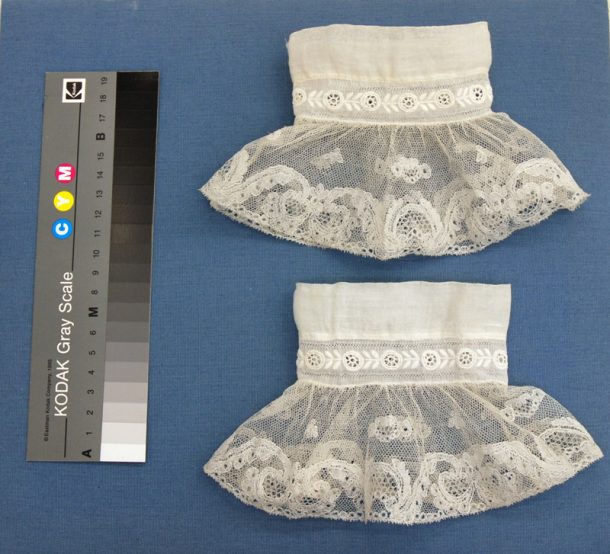
An opportunity to treat an accessioned textile presented itself when ‘Skara Brae’, a 1959 printed cotton textile designed by William Scott for the Edinburgh Weavers, was chosen for display in the Scottish Design Galleries at V&A Dundee. This textile was once part of the V&A Circulation Department, which was founded in 1901 and remained active until 1977 and was, in effect, an object lending library. Many of the objects in the circulating collection are soiled and stained from their many years of heavy use. This textile was originally bought new and hemmed at each end with machine stitching before being sent out to various museums and teaching institutions around Britain. For the display in Dundee the textile needed to be cleaned and flattened, requiring us to remove the hard crease and a line of soiling where the hem has been let down (Figure 2).
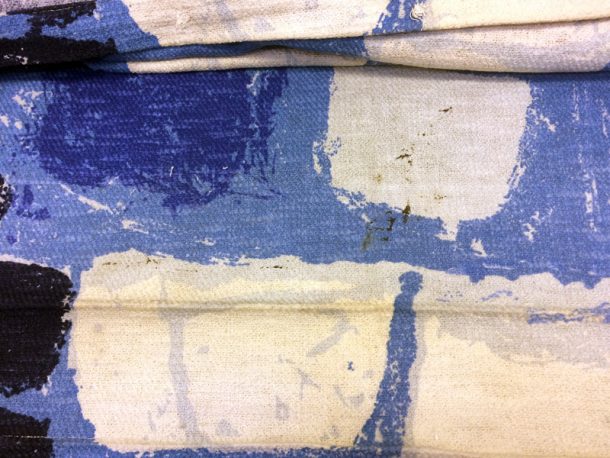
The textile was wet-cleaned in two stages, firstly using 0.2% solution of Hostapon TPHC, followed by 0.1% Hostapon TPHC with the addition of 5g/Litre by volume of Trisodium citrate. Then the sharp crease line and soiling were treated with the ultrasonic wand (Figure 3). The wand was passed over the sharp crease in a sweeping motion, keeping the end of the wand approximately 0.5cm from the surface of the textile. The soiling was observed to be loosening and floating away from the textile. Areas of densely screen-printed design were avoided to prevent potential loss of colour. This method proved very effective in reducing the heavy soiling, which is usually resistant to conventional methods of wet-cleaning (Figure 4).
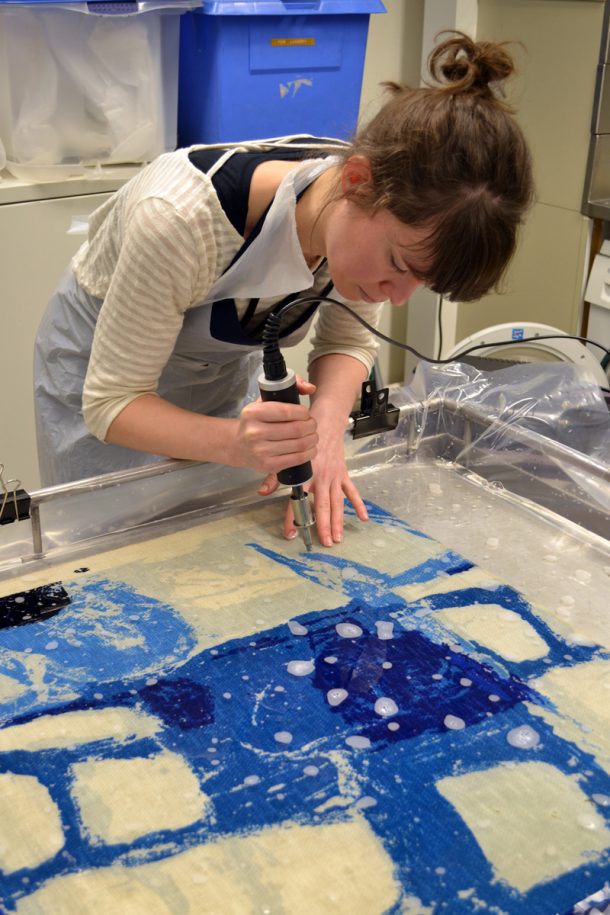
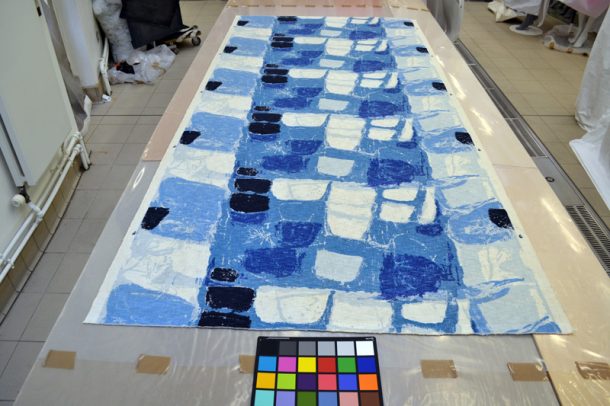
Additional trials revealed that applying the ultrasonic wand through a layer of Melinex had the benefit of both keeping the textile and fibres still and prevented the build-up of surfactant foam which blocks your view. Experimentation will continue to evaluate how much more effective ultrasound is in comparison to conventional wet-cleaning using artificially soiled fabric samples. Harry Singh continues to modify and improve his equipment in response to our findings.
Acknowledgements
I am grateful to Mr. Harry Singh of HDS Ultrasonics Ltd. for his expert advice and encouragement as well as for providing two models of the ultrasonic wand for us to use in our trials. I would like to thank Gabrielle Crowther, Netanya Schiff and Stefani Cavazos, MSc Candidates in Conservation for Archaeology and Museums, University College London, for undertaking the SEM examination of our trial samples.
References
- Crowther, G. S.Cavazos and N. Schiff. Applications of Ultrasonic Cleaning for Historic Textiles: Micro-analysis of potential damage to textile fibres using Scanning Electron Microscopy. V&A Conservation Journal Number 65, 2018.
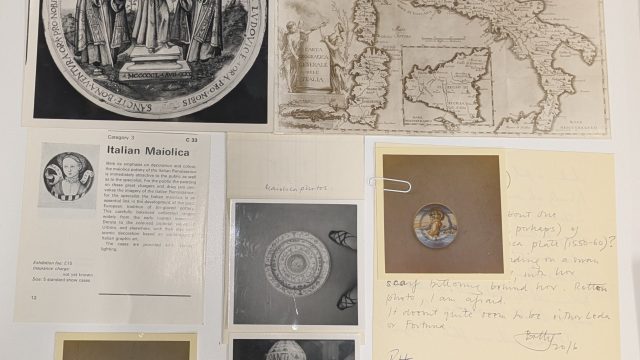

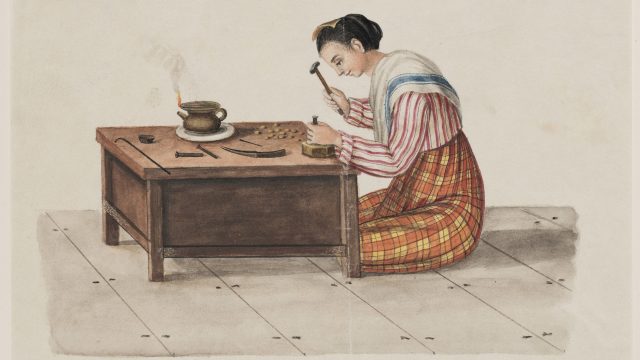
Thank you for posting this, it was a pleasure working with all who took part in this research.
Many thanks & regards
Harry Singh